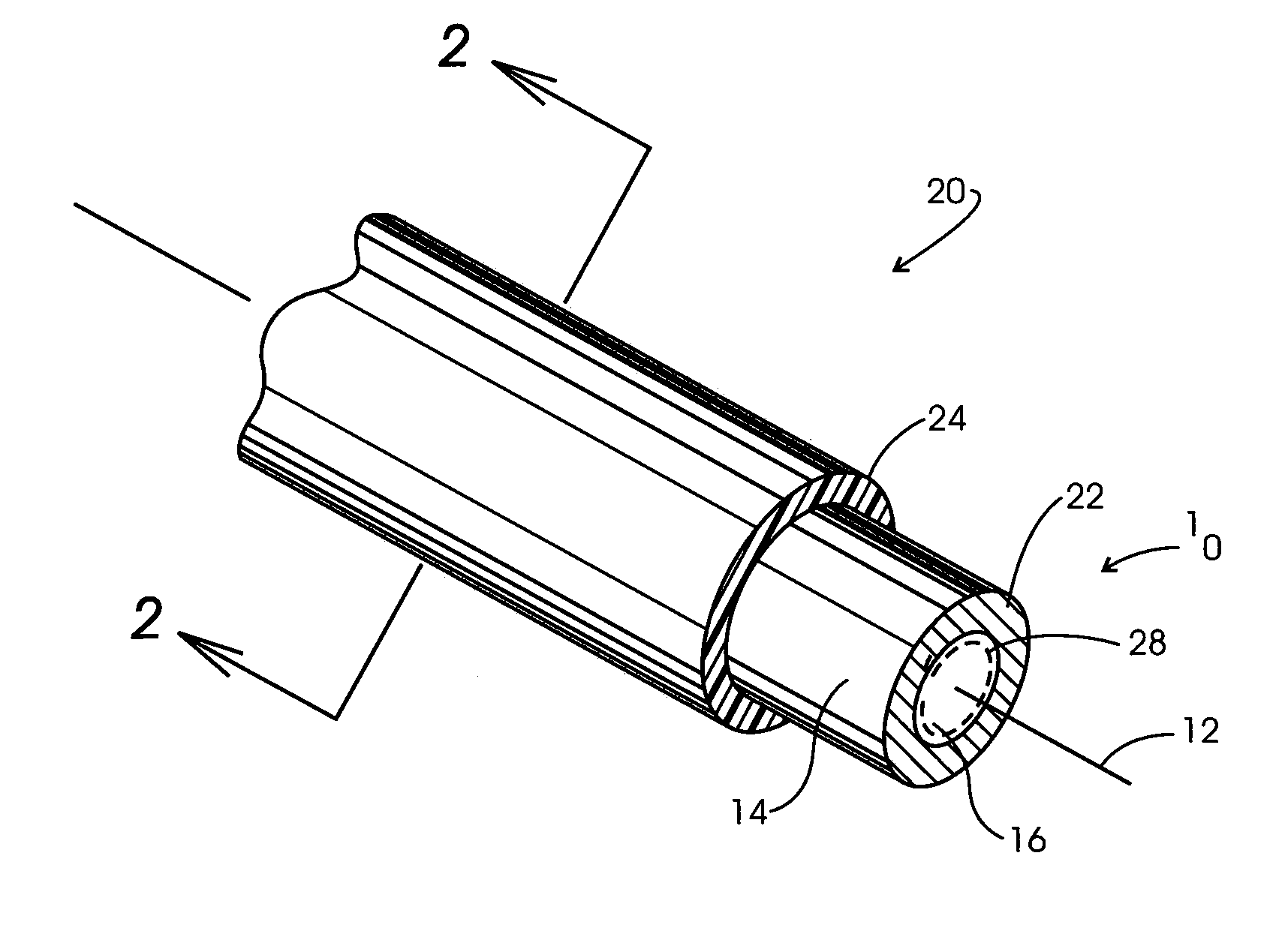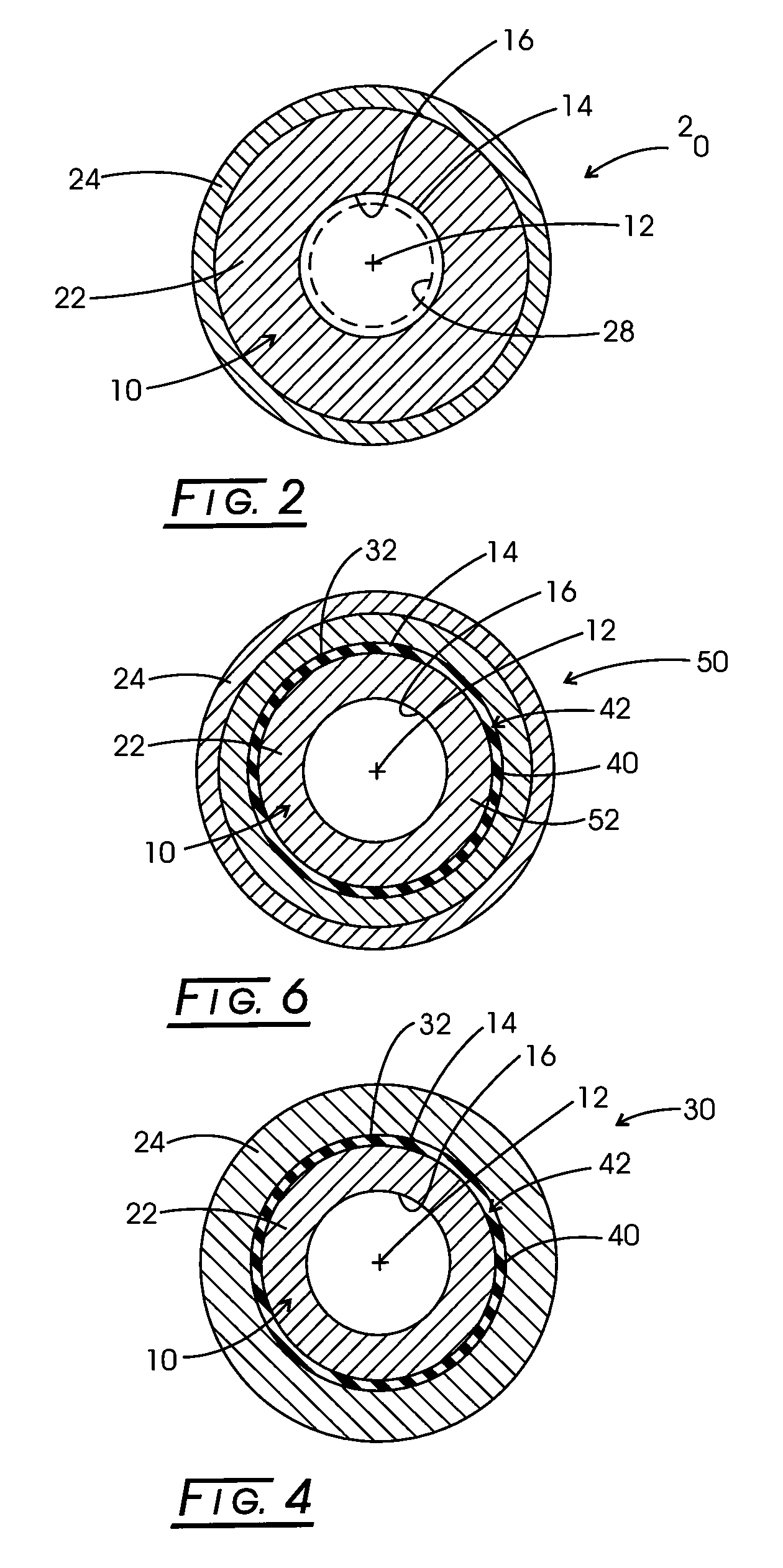Nylon tubing constructions
a technology of nylon tubing and nylon, applied in the field of tubular nylon members and to articles, can solve the problems of loss of physical properties and easy stress cracking
- Summary
- Abstract
- Description
- Claims
- Application Information
AI Technical Summary
Benefits of technology
Problems solved by technology
Method used
Image
Examples
Embodiment Construction
[0023]Certain terminology may be employed in the description to follow for convenience rather than for any limiting purpose. For example, the terms “forward,”“rearward,”“right,”“left,”“upper,” and “lower” designate directions in the drawings to which reference is made, with the terms “inward,”“interior,”“inner,” or “inboard” and “outward,”“exterior,”“outer,” or “outboard” referring, respectively, to directions toward and away from the center of the referenced element, and the terms “radial” or “horizontal” and “axial” or “vertical” referring, respectively, to directions, axes, planes perpendicular and parallel to the central longitudinal axis of the referenced element. Terminology of similar import other than the words specifically mentioned above likewise is to be considered as being used for purposes of convenience rather than in any limiting sense.
[0024]In the figures, elements having an alphanumeric designation may be referenced herein collectively or in the alternative, as will...
PUM
| Property | Measurement | Unit |
|---|---|---|
| melting point | aaaaa | aaaaa |
| temperature | aaaaa | aaaaa |
| thermal decomposition temperature | aaaaa | aaaaa |
Abstract
Description
Claims
Application Information
 Login to View More
Login to View More - R&D
- Intellectual Property
- Life Sciences
- Materials
- Tech Scout
- Unparalleled Data Quality
- Higher Quality Content
- 60% Fewer Hallucinations
Browse by: Latest US Patents, China's latest patents, Technical Efficacy Thesaurus, Application Domain, Technology Topic, Popular Technical Reports.
© 2025 PatSnap. All rights reserved.Legal|Privacy policy|Modern Slavery Act Transparency Statement|Sitemap|About US| Contact US: help@patsnap.com



